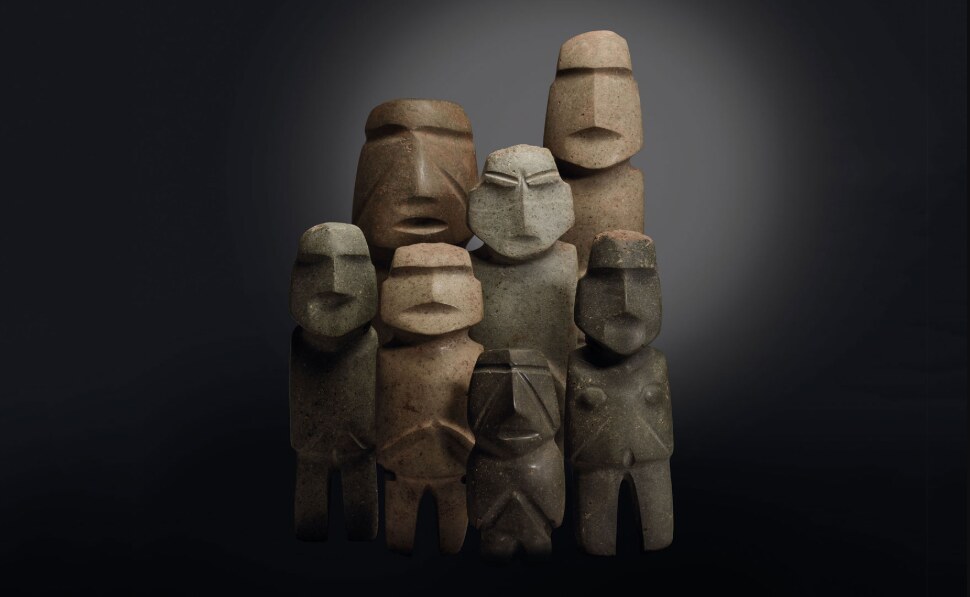The path to becoming an art teacher is a vibrant and fulfilling journey, blending a passion for creativity with the skills to inspire others. An Art Teacher Diploma is a key stepping stone for those who dream of guiding students through the world of artistic expression, whether in primary schools, secondary schools, or specialized art institutions. This blog post explores what an Art Teacher Diploma entails, why it’s a valuable credential, the steps to achieve it, and how it opens doors to a rewarding career in art education. By delving into the nuances of this qualification, we aim to provide a comprehensive guide for aspiring art educators.
Table of Contents
ToggleWhat is an Art Teacher Diploma?
An Art Teacher Diploma is a specialized qualification designed to equip individuals with the skills, knowledge, and practical experience needed to teach art effectively. Unlike a general teaching degree, this diploma focuses specifically on art education, combining coursework in art theory, techniques, and pedagogy. It prepares educators to foster creativity, teach artistic skills, and integrate art into broader educational curricula.
In many regions, such as India, the Art Teacher Diploma (often abbreviated as A.T.D.) is a recognized credential for teaching art in primary and secondary schools. For example, institutions like the Sir J.J. School of Art in Mumbai offer a two-year A.T.D. program that covers drawing, sculpture, architecture, folk art, and Indian art history, along with practical teaching skills. Similarly, programs in the UK and the US may vary in name (e.g., Postgraduate Certificate in Education [PGCE] in Art and Design or Graduate Diploma in Art Education), but they share the goal of preparing educators to teach art across various age groups and skill levels.
The diploma typically includes:
- Art Theory and History: Understanding color theory, perspective, composition, and the historical context of various art forms.
- Practical Art Skills: Training in mediums like painting, drawing, ceramics, and digital art.
- Pedagogical Training: Learning how to design lesson plans, manage classrooms, and foster creativity in students.
- Practical Teaching Experience: Hands-on teaching practice to develop real-world skills.
This qualification is ideal for those with a passion for art and a desire to share it with others, whether they are seasoned artists or newcomers to the field.
Why Pursue an Art Teacher Diploma?
1. Fueling Creativity in Others
Art teachers play a pivotal role in nurturing creativity, self-expression, and critical thinking in students. An Art Teacher Diploma equips educators with the tools to create engaging curricula that inspire students to explore their artistic potential. As noted in a blog from Teachers of Tomorrow, art teachers help students develop skills in painting, drawing, and sculpting while fostering an appreciation for artistic expression. This ability to shape young minds is both rewarding and impactful.
2. Career Opportunities
An Art Teacher Diploma opens doors to teaching positions in schools, community centers, and private institutions. In regions like India, graduates of A.T.D. programs can secure roles as drawing teachers in primary and secondary schools, with opportunities to advance to higher-level qualifications like the G.D. Art or A.M. Vocational courses. In the UK, a diploma combined with Qualified Teacher Status (QTS) enables teaching in state schools, while in the US, certification programs like those offered by Teachers of Tomorrow allow individuals with non-education degrees to transition into art teaching.
3. Personal and Professional Growth
Pursuing this diploma allows individuals to deepen their own artistic practice while learning to communicate complex concepts effectively. The process of creating lesson plans, managing diverse classrooms, and adapting to students’ needs hones skills in leadership, empathy, and organization. As The Arty Teacher blog emphasizes, art teachers must balance creativity with curriculum requirements, making them versatile educators.
4. Societal Impact
Art is not just an “extra” subject; it’s essential for holistic education. According to Art Class Curator, art education fosters emotional literacy and critical thinking, helping students connect with the world in meaningful ways. By earning an Art Teacher Diploma, you become an advocate for art’s transformative power, contributing to a more creative and empathetic society.
Steps to Earn an Art Teacher Diploma
The journey to earning an Art Teacher Diploma varies by country, but the following steps provide a general roadmap based on global practices.
Step 1: Meet Educational Prerequisites
Most Art Teacher Diploma programs require a high school diploma or equivalent as a minimum entry requirement. In India, for instance, candidates for the A.T.D. course must have passed the Higher Secondary Certificate (H.S.C.) and an intermediate grade exam in drawing or a related field. In the UK, a bachelor’s degree in art or a related subject is typically required before pursuing a PGCE in Art and Design. For those without an art degree, options like a Graduate Diploma in Art and Design or art foundation courses can bridge the gap.
Step 2: Choose the Right Program
Research programs that align with your career goals. Some notable options include:
- India: The A.T.D. course at institutions like Sir J.J. School of Art or Rashtrasant Tukadoji Maharaj Nagpur University, which spans two years and includes theoretical and practical components.
- UK: A PGCE in Art and Design, offered by universities or through School-Centred Initial Teacher Training (SCITT) programs, which combines academic study with practical teaching experience.
- US: Programs like Teachers of Tomorrow offer alternative certification routes for those with a bachelor’s degree in a non-education field, focusing on art-specific pedagogy.
- Other Regions: Institutions like Mount Art Academy in Bangalore offer one-year diploma programs that emphasize both art skills and teaching methods.
When selecting a program, consider factors like duration, cost, accreditation, and whether it offers practical teaching experience.
Step 3: Develop Artistic and Teaching Skills
Art Teacher Diploma programs typically blend art practice with pedagogical training. You’ll study:
- Art Techniques: From perspective drawing to mixed media, you’ll refine your skills in various mediums.
- Curriculum Design: Learn to create age-appropriate lesson plans, such as short-term projects for younger students or complex sculpting tasks for older ones.
- Classroom Management: Blogs like Managing the Art Classroom highlight the importance of fostering a respectful and creative environment to encourage student engagement.
- Art History: Gain a deep understanding of global and regional art movements to enrich your teaching.
Practical components often include creating teaching aids, designing lesson plans, and conducting mock lessons. For example, Mount Art Academy requires students to create a teaching file with 10 lesson plans and deliver 40–45-minute lessons.
Step 4: Gain Practical Experience
Hands-on teaching experience is a cornerstone of most Art Teacher Diploma programs. This may involve:
- Observing experienced art teachers.
- Conducting lessons under supervision.
- Managing real classroom scenarios, such as adapting projects for diverse skill levels.
In the UK, SCITT and School Direct programs emphasize practical experience, allowing trainees to work alongside mentors in schools. Similarly, in India, A.T.D. programs include teaching practice to ensure graduates are classroom-ready.
Step 5: Obtain Certification and Licensure
After completing the diploma, you may need additional certifications to teach in certain settings:
- India: A.T.D. graduates are eligible to teach in primary and secondary schools, with opportunities to pursue further qualifications for career advancement.
- UK: A PGCE or equivalent, combined with QTS, is required for state school teaching.
- US: States like Texas require passing competency exams (e.g., PACT or Pedagogy and Professional Responsibilities tests) and obtaining a state teaching certificate.
Continuing education, such as professional development seminars, is often necessary to maintain certification.
Challenges and Rewards of Art Teaching
Challenges
Art teaching comes with unique challenges, as highlighted by various art education blogs:
- Resource Constraints: Tight budgets for art supplies can limit project scope.
- Time Management: Balancing creative freedom with curriculum requirements and grading can be demanding.
- Classroom Dynamics: Managing diverse student needs and maintaining engagement requires empathy and adaptability.
Rewards
Despite these challenges, art teaching is immensely rewarding:
- Inspiring Creativity: Watching students develop their artistic voice is deeply fulfilling.
- Building Connections: Collaborative projects, as noted in New Art Teacher Survival Guide, foster community and teamwork.
- Personal Fulfillment: Combining your love for art with teaching creates a career that is both meaningful and dynamic.
Tips for Aspiring Art Teachers
- Stay Creative: Model creative thinking in your lessons to inspire students.
- Build a Supportive Environment: Create a classroom where students feel safe to take risks and learn from mistakes.
- Leverage Technology: Blogs like The Helpful Art Teacher suggest incorporating digital tools like Photoshop or animation software to engage tech-savvy students.
- Network with Other Educators: Join communities like The Art Ed Blogger’s Network to share ideas and resources.
- Continue Learning: Stay updated with new teaching methods and art trends through professional development or blogs like The Arty Teacher.
The Role of Art Teacher Blogs
Art teacher blogs are invaluable resources for both aspiring and experienced educators. Sites like The Art of Education, Cassie Stephens Blog, and Deep Space Sparkle offer lesson plans, classroom management tips, and inspiration. For example, Art with Mrs. Filmore shares creative projects like positivity posters, while The Cozy Art Teacher provides resources for collaborative tessellation projects. These blogs highlight the importance of community in art education, offering practical ideas to enhance your teaching practice.
Conclusion
Earning an Art Teacher Diploma is a transformative step toward a career that blends artistic passion with the joy of teaching. Whether you’re drawn to the tactile magic of clay, the vibrant hues of watercolor, or the innovative possibilities of digital art, this qualification equips you to inspire the next generation of artists. By following the steps outlined—meeting prerequisites, choosing the right program, developing skills, gaining experience, and obtaining certification—you can unlock a world of opportunities in art education.
The journey requires dedication, creativity, and a commitment to lifelong learning, but the rewards are profound. As you guide students through their artistic journeys, you’ll not only shape their skills but also foster a deeper appreciation for the power of art. Start exploring Art Teacher Diploma programs today, and take the first step toward a career that colors the world with creativity.




